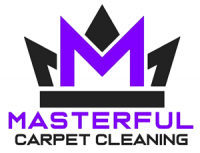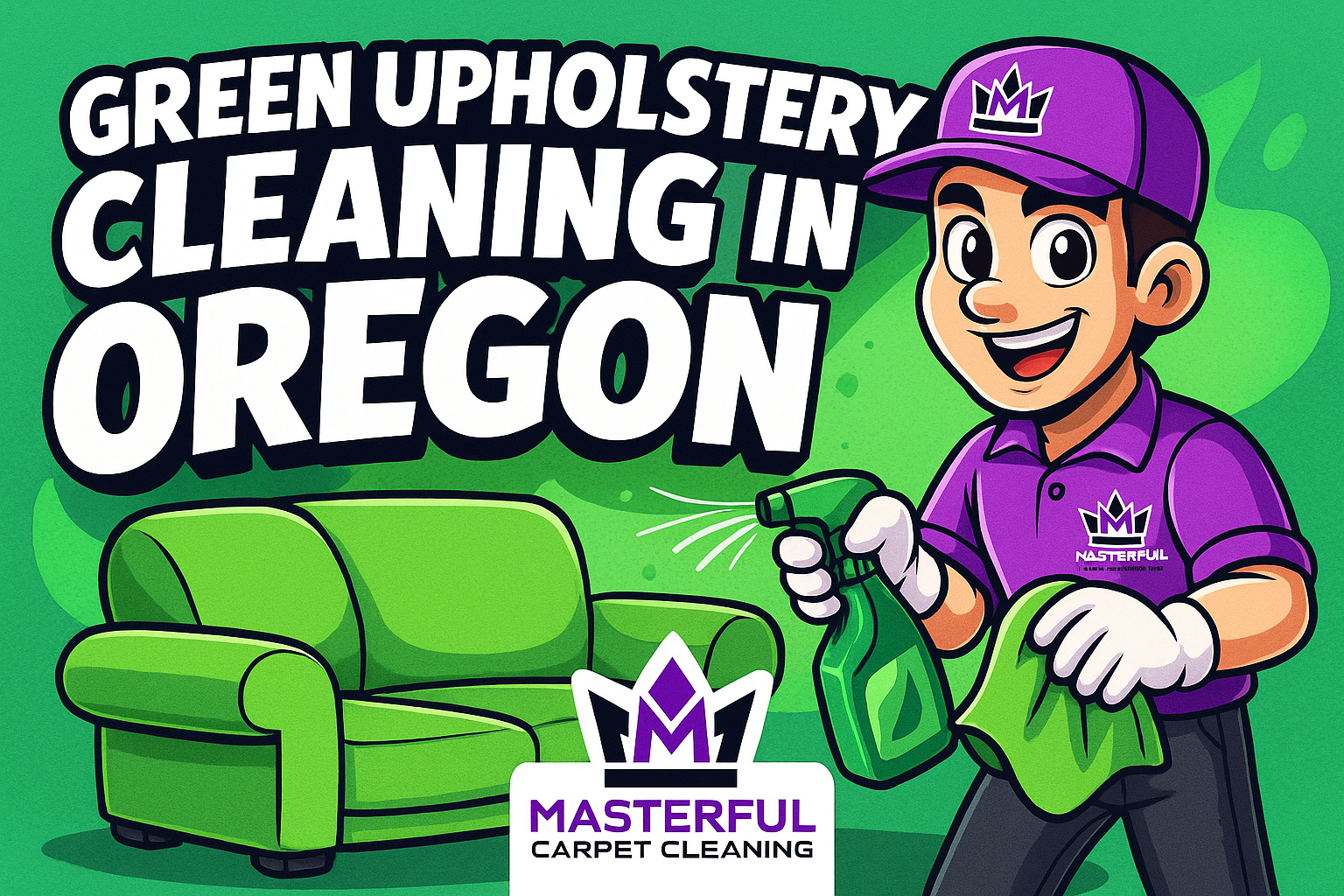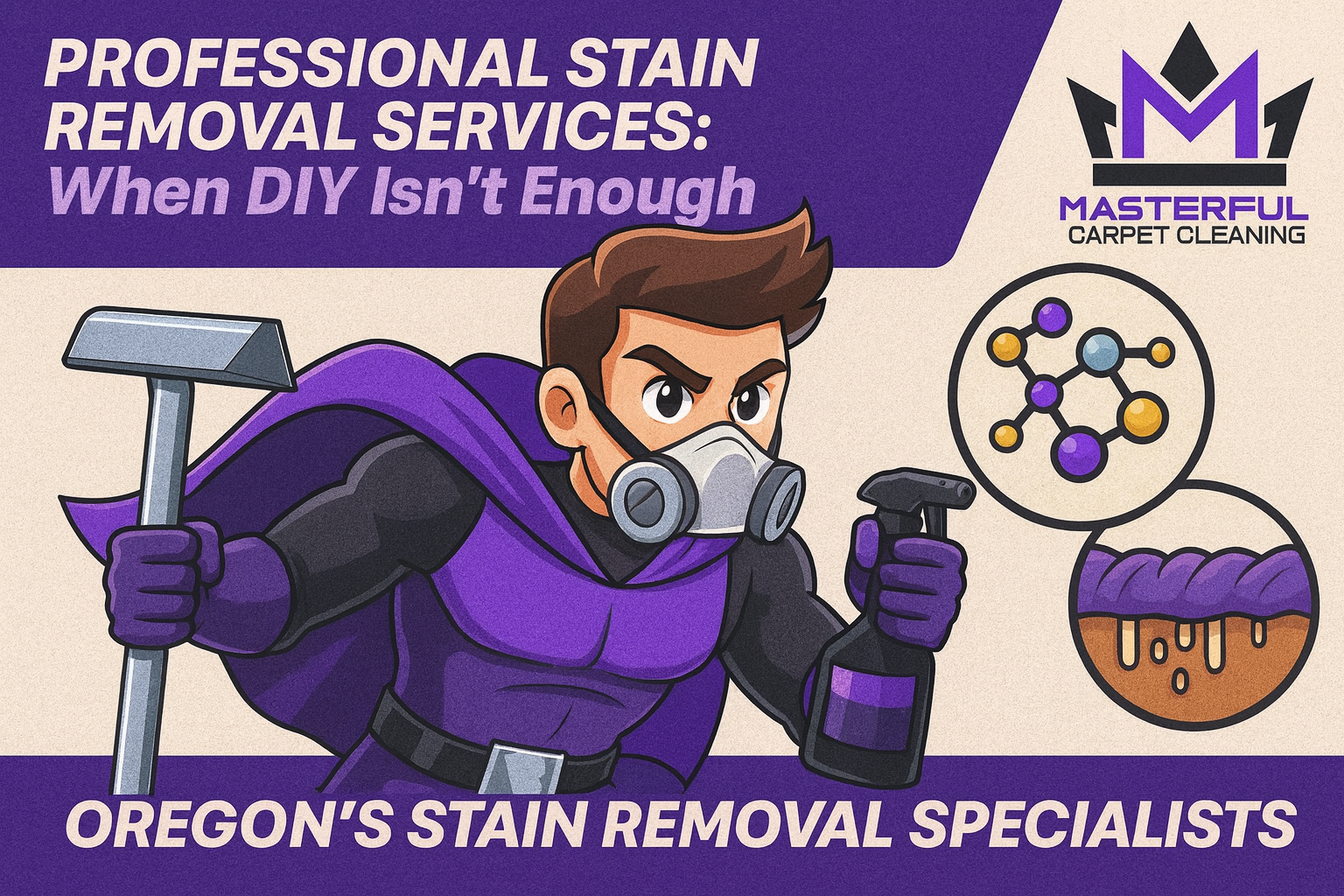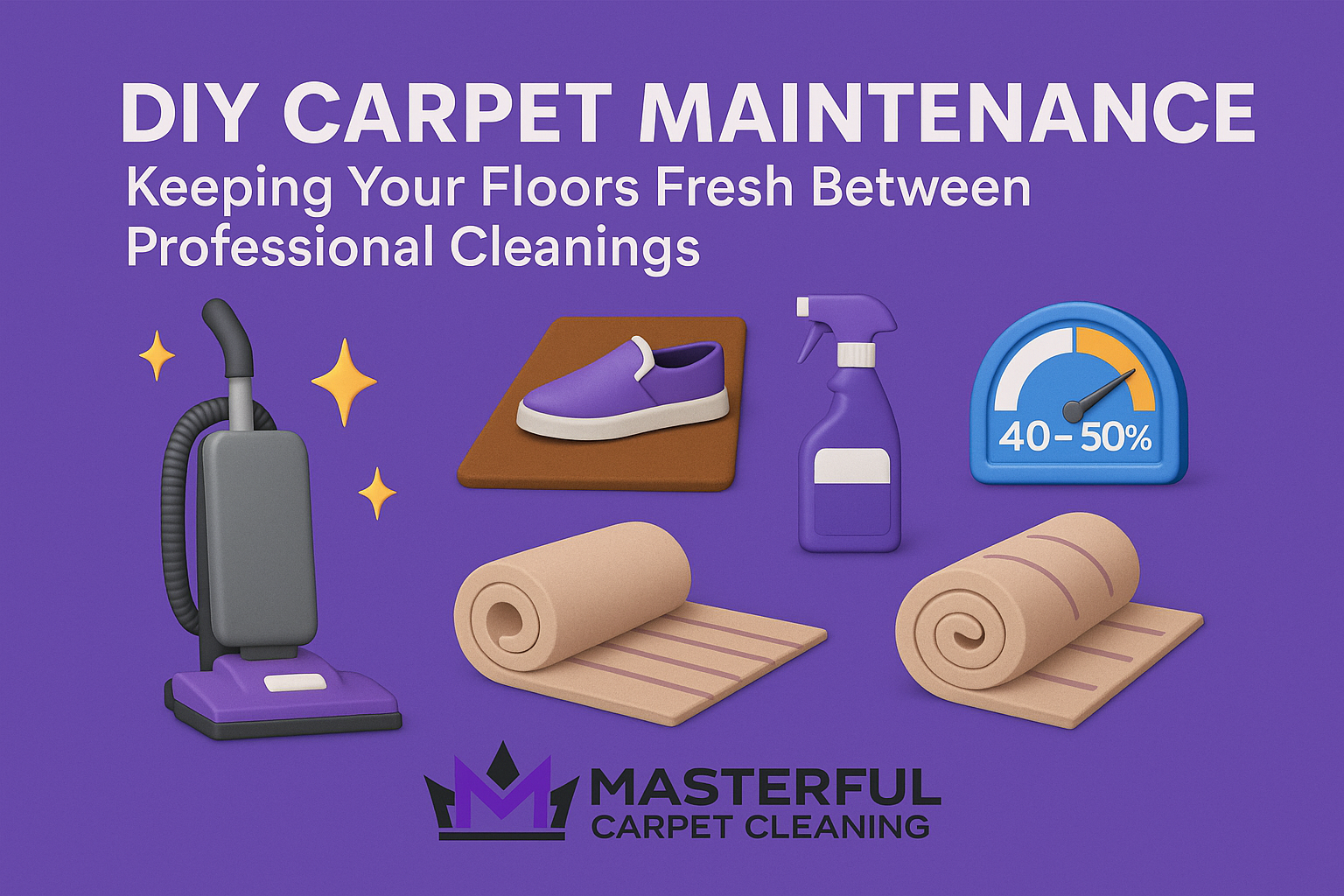Carpet Pre-Sprays: Enzymatic, Solvent Infused & Oxygenated – What Each Does and When to Use It
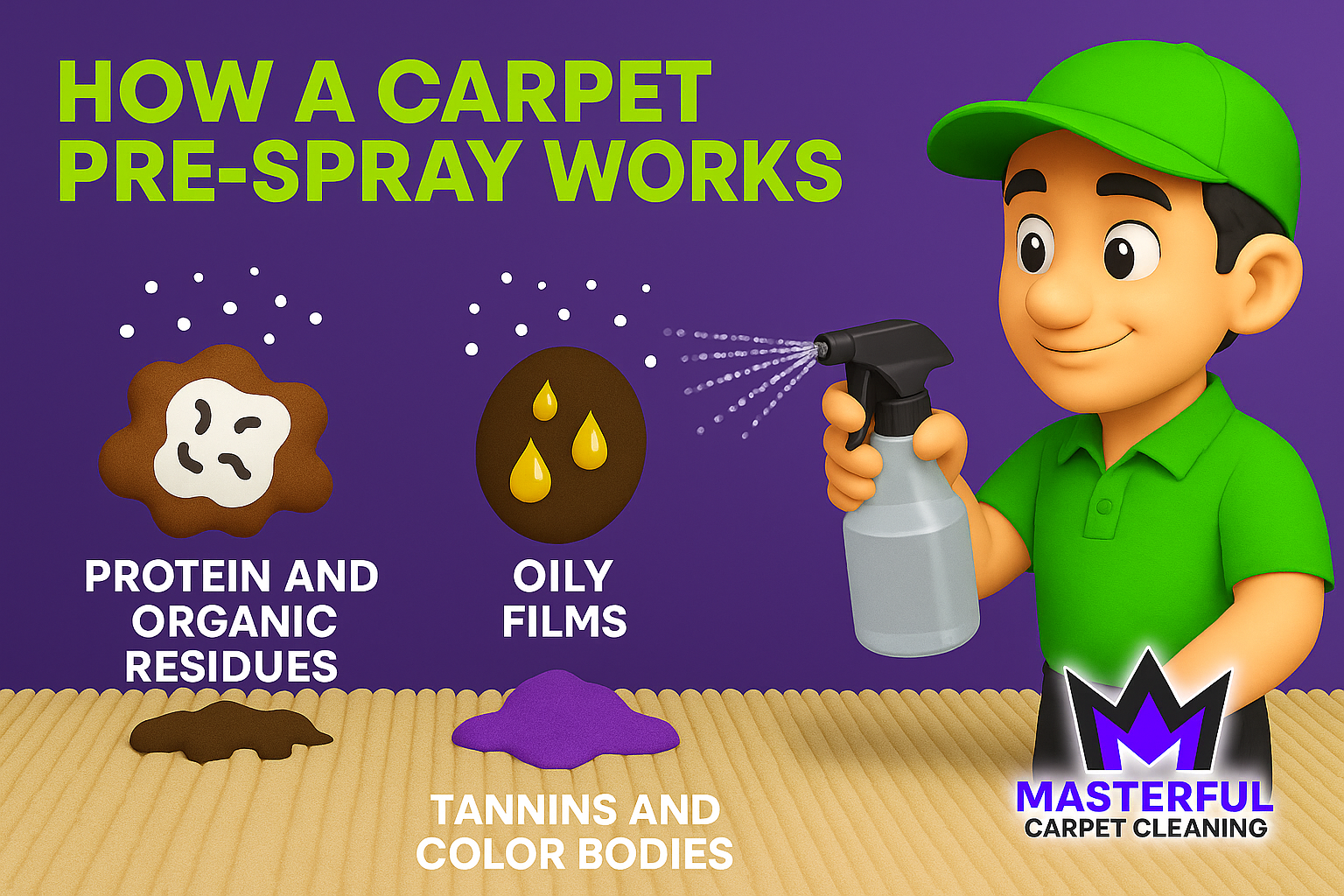
Carpet pre-sprays loosen what water alone can’t. Enzymatic sets digest protein soils, solvent infused sets cut oily films, and oxygenated sets brighten tannins and lingering discoloration. Apply evenly, allow the right dwell, agitate safely, then finish with a balanced rinse to a neutral state so no sticky residue causes rapid re-soiling.
Pre-spray choice decides how easily soils release, how fast lanes gray out again, and if delicate fibers keep their color and soft hand. This guide gives you a clean, field tested map for picking the right family, dialing in dwell and agitation, and finishing to a residue-free result. For a process overview that ties chemistry to machine setup, keep carpet cleaning methods compared handy. For drying, ventilation, and wick-back control, reference carpet cleaning chemistry & aftercare.

How a pre-spray really works
Carpet soils cling to yarn in different ways. A good pre-spray changes those conditions so extraction can carry the soil away.
- Protein and organic residues (food, dairy, body fluids, pet accidents). These form sticky films as they dry. Enzymes break the long chains into pieces that rinse out.
- Oily films (body oils, cooking aerosols, cosmetics, asphalt transfer). Surfactants and mild solvent boosters lower surface tension and break that film so trapped dust releases.
- Tannins and color bodies (coffee, tea, wine). Oxygen sources can normalize tone after the main clean.
- Dry particulate (sand, grit). Once the oily film is gone, fines lift with agitation and rinse.
Pre-spray is the unlock, not the finish. The win comes from even application + measured dwell + safe agitation, followed by a balanced rinse that removes what the chemistry freed and returns pH near neutral. If you want a one-page explainer of the finish, see balanced rinse & neutralizer.
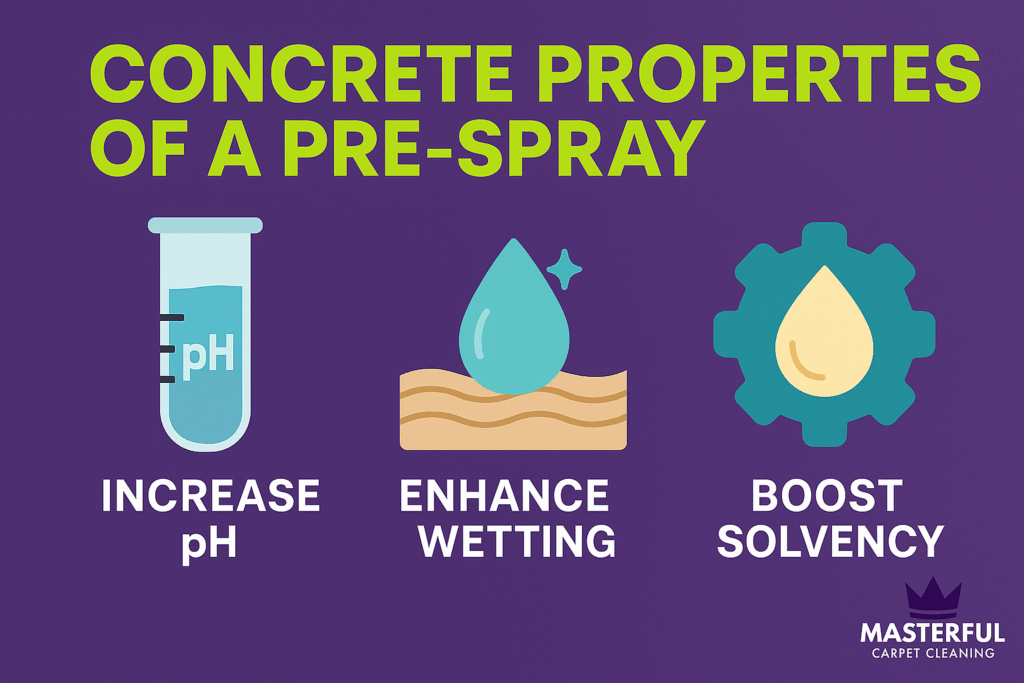
The three big families (plus a mild set for delicates)
Enzymatic pre-sprays – the protein problem solvers
What they do Enzymes digest protein soils into tiny fragments that release during extraction. They need even coverage, moisture, and time. Warm solution helps; drying does not.
Where they shine Dining zones, playrooms, nursery areas, pet hangouts, and anywhere food drips turned tacky.
Application keys
- Keep the film moist through dwell. If it begins to dry, re-mist lightly with working solution.
- Use light agitation to spread chemistry across yarn sides, not to scrub fibers.
- Rinse to neutral so no active chemistry lingers.
Use with care on Wool and other natural fibers. Favor cooler solution temperatures, shorter dwell, and light motion. Always spot test on patterned goods and near transitions.
Field pitfalls to avoid
- Treating enzymes like instant cleaners. They work during a window; patience matters.
- Hitting only the visible spot. Uniform coverage reduces haloing and ring marks.
On odors Enzymes reduce odor at the source when organic residues are present. Severe pet issues may need a second path, see the “deodorization” note near the end.
Solvent infused pre-sprays – lane film and grease control
What they do Mild solvents and modern surfactants cut the oily film that glues dust to yarn. A measured boost transforms how traffic lanes respond.
Where they shine Entryways, hallways, family rooms, makeup areas, office lanes, and anywhere kitchen aerosols drift.
Application keys
- Pair with mechanical agitation (CRB, soft brush, or suitable pad) to expose fresh chemistry to the film.
- Rinse thoroughly. A clean finish prevents fast “lane gray.”
Use with care in Poorly ventilated spaces. Move air during and after cleaning and rinse away any scent. Never stack concentrate when agitation and dwell do the work better.
Field pitfalls to avoid
- Thinking “more is better.” Correct dilution plus agitation outperforms heavy application.
- Skipping a rinse because the carpet “looks clean.” The invisible film is the one that causes callbacks.

Oxygenated pre-sprays – tone and tannin helpers
What they do Oxygen sources brighten and address certain color bodies after soil is removed. They help with coffee, tea, wine, and yellowing that lingers once the main clean is complete.
Where they shine Around beverage stations, breakfast nooks, desks, and the edges of old spill sites.
Application keys
- Use as a measured finishing touch, not a blanket flood.
- Always follow with a rinse so fibers return to a friendly state.
Use with care on Wool and other naturals. Keep contact brief, temperature modest, and perform strict spot tests.
Field pitfalls to avoid
- Expecting oxygen to replace basic soil removal. It’s a finisher.
- Over-brightening attempts on unstable dyes.
Neutral/mild surfactant sets – safer for delicate or unknown goods
What they do Well buffered, low aggression surfactants lower surface tension and loosen light to moderate soil without pushing pH or heat.
Where they shine Wool, natural blends, loop and patterned constructions, and jobs with uncertain dye stability.
Application keys
- Favor gentle agitation and longer rinse contact over force.
- Add extra dry passes to manage moisture.
Helpful partner content For safe handling and traffic guidance on natural pile, keep wool carpet maintenance handy.
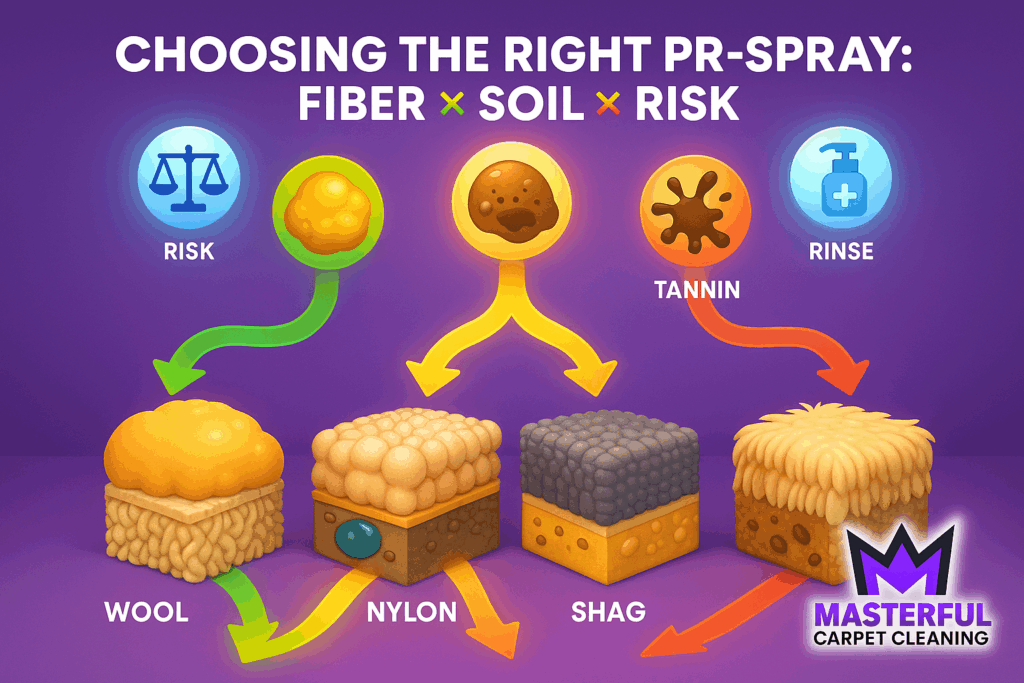
Selection logic: soil × fiber × risk
Every job blends three variables:
- Soil type – protein, oily film, tannin, or mixed.
- Fiber & construction – nylon, polyester/triexta, olefin, wool; cut pile vs loop/berber vs shag.
- Risk level – dye stability, texture distortion, cushion saturation history, subfloor seams, and wick-back track record.
Pick the pre-spray for the dominant soil, then temper the approach to the most delicate variable in the group. That single sentence explains why seasoned techs deliver consistent results.
Expanded decision matrix
| Dominant soil | First choice | Add/adjust with | Fiber cautions | Finish focus |
|---|---|---|---|---|
| Protein/organic | Enzymatic pre-spray | Light agitation; keep moist through dwell | Wool: cooler temps, shorter dwell | Balanced rinse; extra dry passes in spill zones |
| Oily film | Solvent-boosted pre-spray | Mechanical agitation; edge and lane focus | None special; rinse thoroughly | Balanced rinse; groom to lift pile |
| Tannin/color | Oxygenated finisher | Only after soil removal; brief contact | Wool/naturals: strict spot testing | Balanced rinse; airflow to speed drying |
| Mixed/general | Mild surfactant set | Patch enzyme or solvent boost by area | Match to fiber; avoid excess heat | Balanced rinse; moisture control |
Red flags to factor in
- Old flood lines near baseboards.
- Roll marks and pattern tracking on loop goods.
- Shag with long pile that traps solution mid-fiber.
- Stair noses with repeated abrasion and embedded oils. These call for tighter moisture control, more dry passes, and extra airflow.
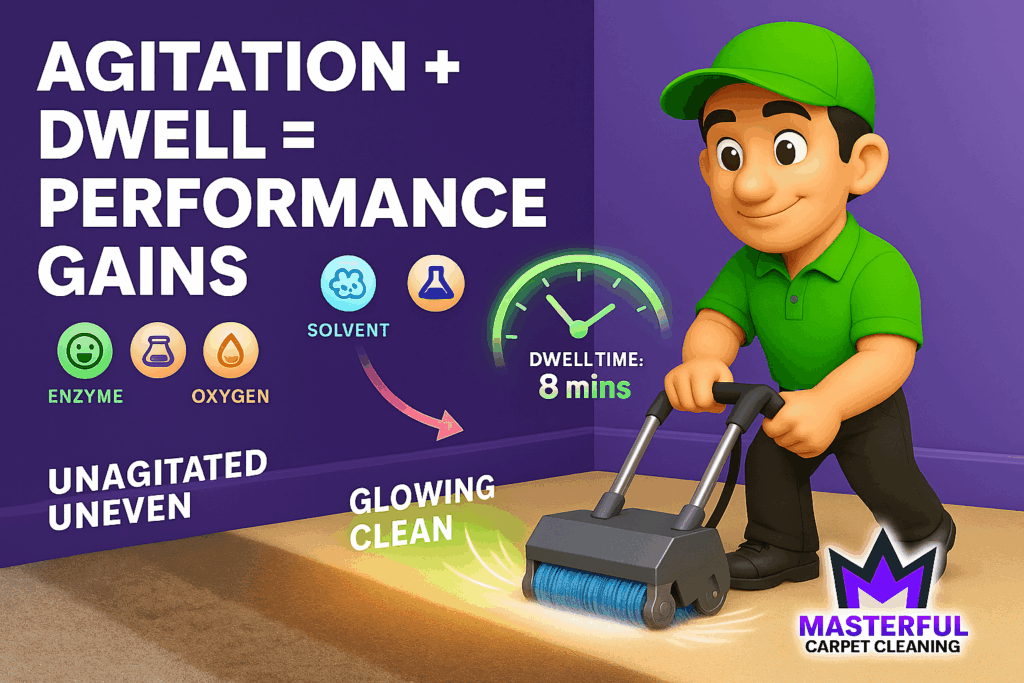
Dwell and agitation: where many cleans are won or lost
Pre-spray that never reaches all yarn sides won’t perform. Agitation evens coverage and opens the pile.
Tool choice
- CRB (counter-rotating brush) – lifts pile, grabs lint, and drives chemistry through yarn tips. Great on cut pile and many commercial carpets.
- Soft brush – ideal for loop and patterned goods; lower risk of snagging.
- Pad driver with suitable pad – a steady choice on certain commercial glue-down carpets.
Technique
- Match brush stiffness to fiber and construction.
- Think like a painter: cover edges, entries, and pivot points with intention.
- Keep the product from drying. If needed, re-mist lightly with working solution rather than stacking concentrate.
Dwell rules
- Enzymes: they work during a window; give them that time.
- Solvent infused sets: quicker acting; rely on agitation more than waiting.
- Oxygenated sets: short, controlled contact as a color-tone finisher.
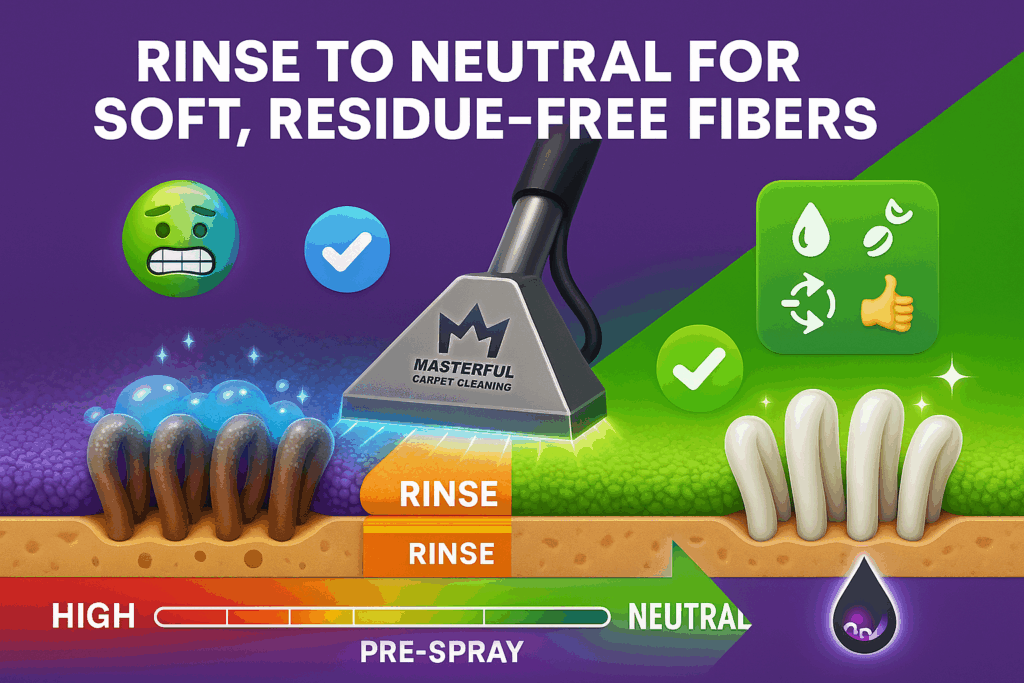
Rinse and finish: return the carpet to neutral
The best pre-spray still needs a clean finish. A balanced rinse flushes soils and chemistry, brings pH back toward neutral, and leaves fibers soft instead of “crunchy.”
Execution checklist
- Set pressure and flow for the construction you’re on. Deeper pile calls for measured passes, not flooding.
- Run slow, even extraction strokes so the wand carries away what the chemistry freed.
- Add extra dry passes in lanes and spill zones; a few seconds now save hours of lingering moisture.
- Groom the pile so airflow reaches lower fiber segments and visual texture looks even.
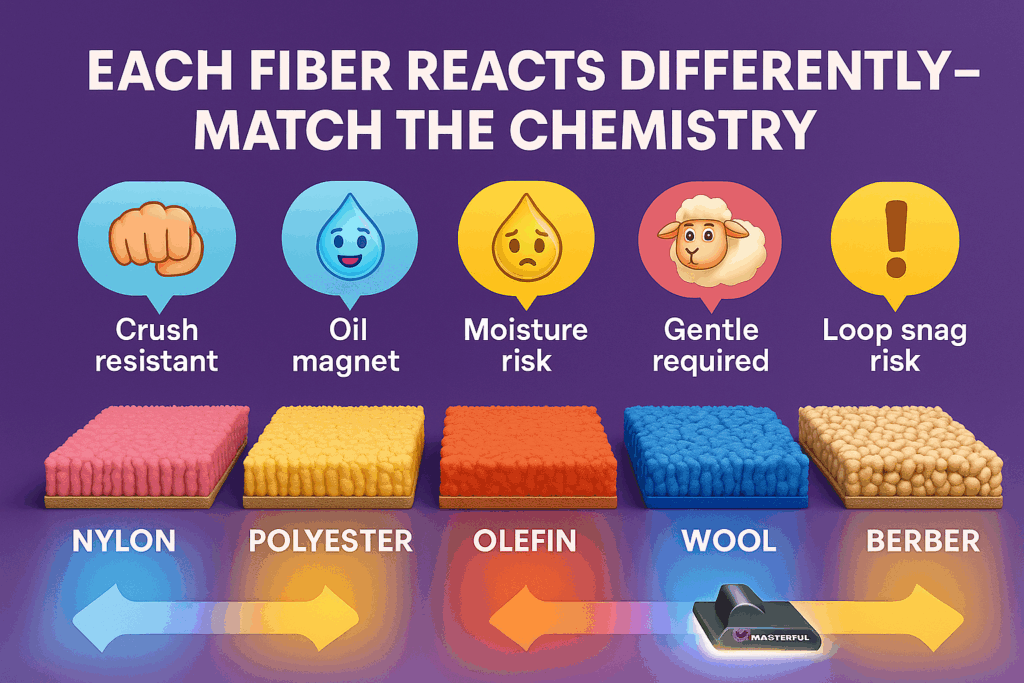
Fiber specific best practices
Nylon
Durable and forgiving. Accepts a wide range of chemistry when you rinse to neutral. Oil heavy lanes respond well to a measured solvent boost plus CRB. Cleaning removes film; it can’t rebuild crushed texture.
Polyester/Triexta
Resistant to many dyes yet drawn to oils. Lean into solvent boosted sets and mechanical agitation, then rinse to a squeaky clean finish.
Olefin/Polypropylene
Shrugs at many water based stains but holds oil and tar tightly. Watch for wick-back in basements and commercial glue down. Moisture control and extended dry passes pay off.
Wool
Treat with respect: mild chemistry, modest temperature, and controlled dwell. Extra dry passes preserve the soft hand. For ongoing care and traffic guidance, link readers to wool carpet maintenance.
Loop, berber, shag, and patterned goods
Lower agitation pressure, avoid snagging, and keep tools clear of seams and transitions. For shag, let chemistry and time replace force; then extract patiently.

Field recipes you can trust
Fresh food spill (protein heavy)
- Lift solids and blot without grinding.
- Apply an enzyme pre-spray beyond the visible area for uniform coverage.
- Keep it moist during dwell; re-mist lightly if needed.
- Light agitation with a soft brush.
- Rinse to neutral with slow strokes; add extra dry passes.
- Groom and move air across the area.
Why this works Enzymes break the bond, the rinse removes fragments, and airflow prevents wick-back.
Traffic lane buildup (oily film)
- Thorough pre-vacuum to remove fines.
- Solvent infused pre-spray on lanes; standard pre-spray on adjacent blend zones.
- CRB or pad agitation focused on the film.
- Balanced rinse; multiple dry passes where pile looks matted.
- Groom and ventilate.
Why this works You attack the film directly, then check no residue remains to grab more soil.
Coffee or tea (tannin + possible dairy)
- Test dyes.
- If dairy is present, give an enzyme step first; rinse.
- Apply a measured oxygen step; keep contact brief.
- Rinse again, groom, and increase airflow.
Why this works Protein first, then color bodies, a sequence that avoids setting in the tint.
Cosmetics transfer
- Blot to control spread, no scrubbing.
- Apply solvent-boosted pre-spray in controlled passes.
- Light agitation; rinse thoroughly and ventilate.
Why this works You’re targeting oils and pigments while keeping the footprint tight.
Pet accident (fresh)
- Extract free liquid gently to avoid widening the mark.
- Enzyme pre-spray; dwell under a light re-mist as needed.
- Rinse to neutral; extend dry passes.
- If odor lingers, follow with a measured oxygen step and strong airflow.
Why this works Source removal plus enzyme action, then a neutral finish and odor control.
Mystery “shadow” on a light carpet
- Inspect under a bright, low-angle light to see film vs. dye issue.
- Try a small solvent-boosted test area with agitation and rinse.
- If tone remains, attempt a cautious oxygen touch; rinse and groom.
- Document result; advise on protector for future cleanups.
Why this works You isolate whether you’re fighting film or color bodies before scaling effort.
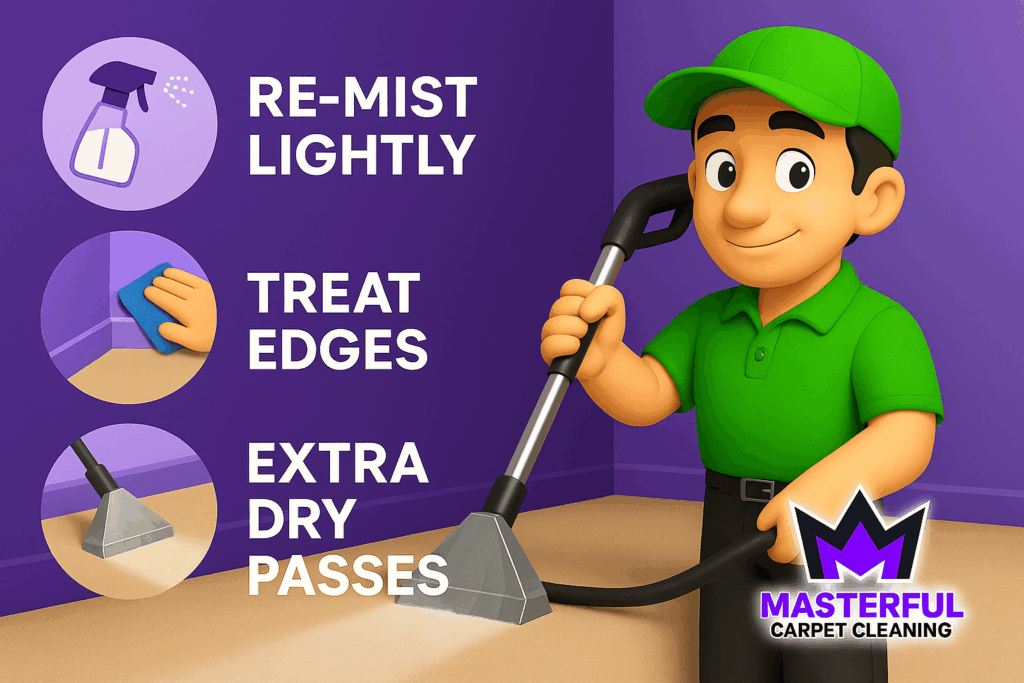
Aftercare that keeps results stable
Your part starts the moment the truck pulls away. Guidance in plain language avoids misunderstandings and cutbacks.
Airflow & temperature
- Open interior doors and a window or two for cross breeze if conditions allow.
- Run HVAC or portable fans to move air across the cleaned area.
- Keep rooms comfortably warm and low in humidity for the rest of the day.
Traffic & furniture
- Walk in clean socks once the surface feels dry to the touch.
- Keep furniture tabs and blocks in place until the area is fully dry.
- Hold off on rolling chairs and carts until tomorrow.
Grooming
- Lightly rake high pile areas so fibers set evenly. This reduces shade lines and helps airflow reach lower fiber segments.
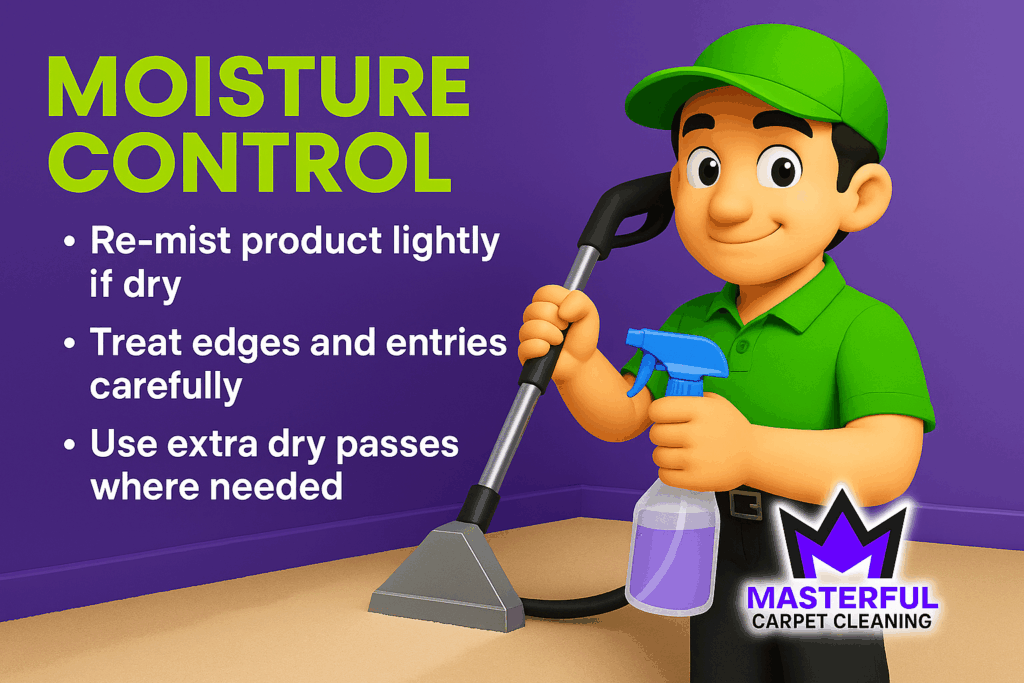
Wick back: why spots return and how to stop the encore
Wick back is the reappearance of a spot as deeper moisture rises during drying and brings discoloration with it. Flooded spills, sugary drinks, and residues buried below the face yarn are common triggers.
Prevention during service
- Control moisture over subfloor seams and cushion edges.
- Use extra dry passes in heavy spill zones and lanes.
- Place absorbent pads on deep spills after the rinse.
If a shadow returns at home
- Increase airflow and blot gently with a clean towel, no scrubbing.
- Skip spotters that leave soap behind.
- If the shadow holds, schedule a targeted flush. Most reappearing spots respond once the subsurface is addressed.
Protector and deodorization: when to say yes
Protector after cleaning buys time during spills and makes vacuuming more effective. It shines on stairs, hallways, family rooms, and offices with rolling traffic.
Application basics
- Apply evenly while the carpet is clean and slightly damp.
- Groom so coverage reaches all sides of the yarn.
- Let the area dry without foot traffic for the recommended window.
Deodorization paths
- Enzyme treatment targets odor sources where organic residues remain.
- Oxidation handles odor bodies that enzymes don’t neutralize. Severe pet issues sometimes need both stages and, in stubborn cases, subsurface treatment if cushion or subfloor holds contaminants.
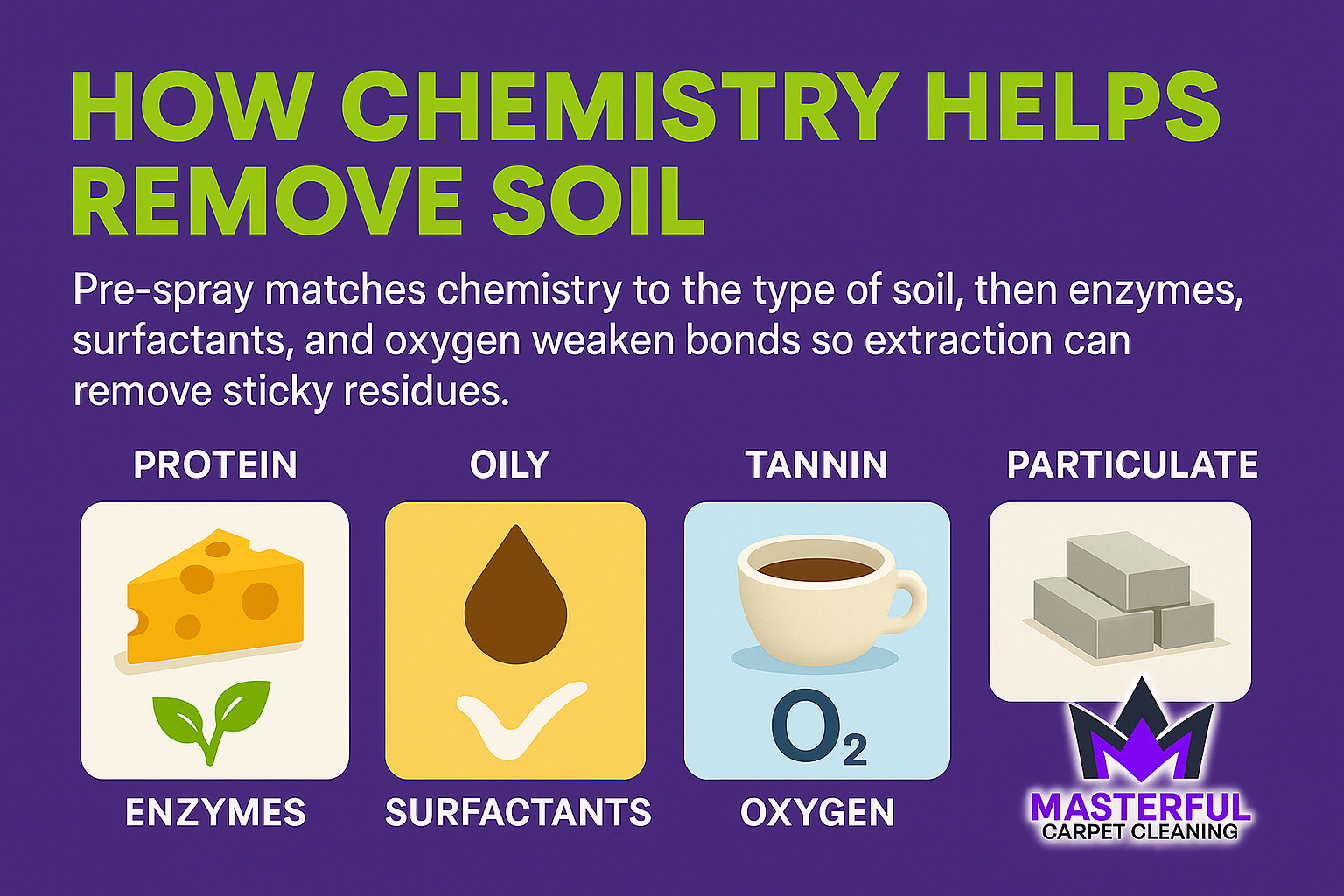
QA: what success looks and feels like
Visual cues
- Lanes look even with no haloing around former spots.
- Pile stands upright after grooming, with uniform texture and no swirl scuffs.
Tactile cues
- Fibers feel soft, not squeaky or crunchy.
- No slick or soapy feel at the fingertips.
Drying
- Moisture is markedly lower in lanes and spill zones thanks to extra dry passes.
- A small fan placed for an hour leaves the area clearly drier to the touch.
FAQs
Do enzymes keep working after the technician leaves? Not when you rinse correctly. The goal is complete soil release followed by a neutral finish without active chemistry left behind.
Are solvent infused pre-sprays safe for kids and pets? Used properly and rinsed to a clean finish, yes. Technicians ventilate while working and leave the carpet free of sticky residue that attracts new soil.
Can oxygen remove every stain? No. Oxygen helps with certain color bodies after soil removal. Old set-ins, chemical burns, and unstable dyes may not respond.
What’s the safest pre-spray for wool? Start mild. Use cooler solution temperatures, light agitation, and shorter dwell. Rinse to neutral and add extra dry passes.
Why do some carpets resoil quickly after DIY cleaning? Leftover soap forms a film that grabs dust and oils. The fix is measured pre-spray, complete agitation, and a balanced rinse to a neutral state with extra dry passes.
Is more pre-spray better on heavy soil? Uniform coverage beats heavy concentrate. Agitation and dwell do the heavy lifting; the rinse does the rest.
How can I check if residue remains? Once dry, rub the tips gently between clean fingers. A soft hand signals success; a squeak or tack suggests a film. In that case, schedule a follow up flush.
Carpet pre-sprays prep fibers so extraction can remove stubborn soil. Enzymatic sets digest protein spills, solvent boosted sets cut oily films in traffic lanes, and oxygenated sets brighten tannins after cleaning. Apply evenly, allow the right dwell, agitate safely, then finish with a balanced rinse to neutral so no sticky residue causes quick re-soiling.
When in doubt, choose mild and verify Spot test, start with the least aggressive chemistry that can win, and confirm with a residue free finish.
As the Co-Owner of Masterful, Randy has been providing quality cleaning services to the Salem and Portland areas of Oregon for many years. He has built a reputation for excellence in the industry. His team take prides in using the latest cleaning techniques and technologies to deliver exceptional results every time. Author

